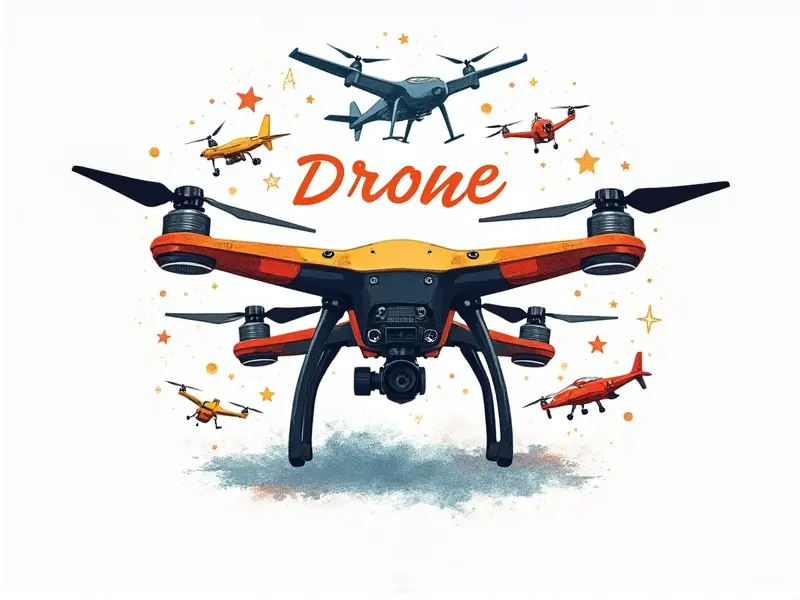Compact drone construction

Building Tiny Drones from Scratch
Creating your own compact drone can be an exhilarating journey for hobbyists and enthusiasts alike. The process begins with conceptualizing the design, selecting materials that are lightweight yet durable, and understanding the aerodynamics involved in such a small scale.
- Selecting Components: Choose motors, ESCs (Electronic Speed Controllers), propellers, frames, and batteries wisely to ensure optimal performance.
- Design Considerations: Focus on minimizing weight while maintaining structural integrity. Utilize materials like carbon fiber or high-strength plastics for the frame.
Crafting Micro Quadcopters at Home
Micro quadcopters are among the smallest drones you can build, typically weighing less than 50 grams. They offer a unique challenge due to their compact size and require precision in assembly.
- Component Sourcing: Look for miniature ESCs, brushless motors, and propellers designed specifically for micro quadcopters.
- Assembly Tips: Pay attention to the balance of the frame. Even a slight imbalance can affect flight stability.
DIY Nano Drone Assembly Guide
Nano drones are even smaller than their micro counterparts, often weighing less than 15 grams. They present unique challenges in terms of assembly and tuning.
- Tuning: Fine-tune the ESCs for optimal performance at such a small scale.
- Firmware Selection: Choose firmware that supports the low power consumption required by nano drones.
Creating the Smallest FPV Racing Drones
FPV (First Person View) racing with compact drones has gained immense popularity. These tiny machines require specialized equipment and a keen understanding of aerodynamics.
- Camera Selection: Opt for lightweight, high-resolution cameras that can capture detailed footage without adding too much weight.
- Antenna Setup: Ensure clear transmission by selecting the right antenna configuration.
Tips for Making Compact Drones
Making compact drones requires a blend of technical knowledge and creativity. Here are some essential tips to keep in mind:
- Battery Management: Use high-capacity, lightweight batteries that can provide sufficient power without adding too much weight.
- Weight Optimization: Every gram counts when building compact drones. Optimize the design by removing unnecessary components and using lightweight materials.
Engineering the Ultimate Pocket Drone
The ultimate pocket drone is one that packs a punch in terms of performance while remaining incredibly portable. Here’s how to achieve this:
- Frame Design: Create a frame that can accommodate all necessary components without compromising on size.
- Propeller Efficiency: Select propellers that are efficient and capable of generating lift with minimal power consumption.
Simplifying Tiny Drone Assembly
Assembly of tiny drones can be complex due to their small size. Here are some ways to simplify the process:
- Modular Design: Build your drone using modular components that can be easily assembled and disassembled.
- Tool Selection: Use tools designed for micro assembly, such as precision screwdrivers and tweezers.
A pocket-sized plane is an intriguing project that combines aerodynamics with compact design. Here’s how to build one:
- Wing Design: Create wings that are lightweight yet strong enough to support the aircraft.
- Motor Selection: Choose a motor powerful enough to generate lift but small enough for your plane's size.
Crafting Petite Helicopters Efficiently
Petite helicopters, or micro helis, are another exciting project that requires precision and skill. Here’s how to build one:
- Main Rotor Design: Focus on creating a main rotor system that is efficient in generating lift.
- Tail Rotor Integration: Ensure the tail rotor is properly integrated to maintain stability during flight.
Secrets to Building Ultra-Compact Drones
Beyond standard compact drones, ultra-compact drones present unique challenges and opportunities. Here are some secrets to success:
- Nanotechnology Integration: Explore the use of nanomaterials for even lighter frames.
- Custom Firmware Development: Develop custom firmware that optimizes performance at this scale.
From Idea to Flight: Mini Drones
The journey from concept to flight with mini drones is a rewarding one. Here’s how to make it happen:
- Idea Validation: Start by validating your idea through research and prototyping.
- Flight Testing: Conduct thorough testing in various environments to ensure reliability and performance.
Conclusion
The world of compact drone construction is a fascinating blend of engineering, creativity, and passion. From building tiny quadcopters to crafting ultra-compact planes and helicopters, each project presents unique challenges and opportunities for innovation. By following the tips and guidelines outlined in this article, you can embark on your own journey to create amazing mini drones that push the boundaries of what’s possible.

